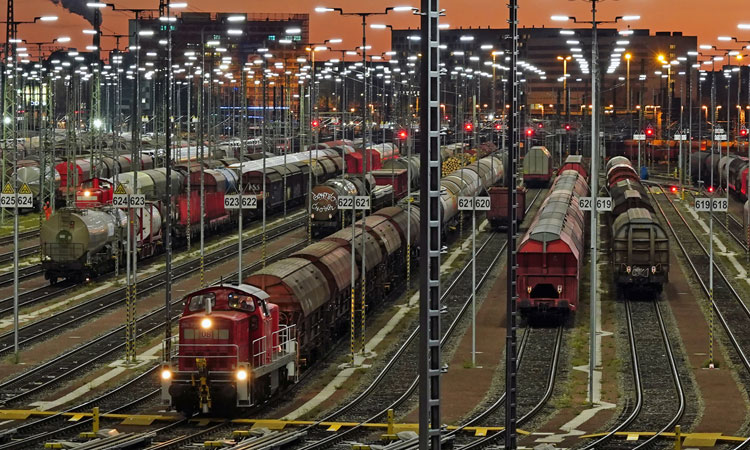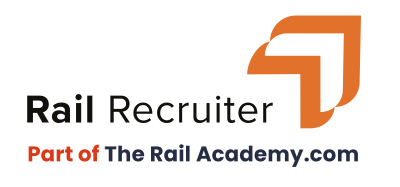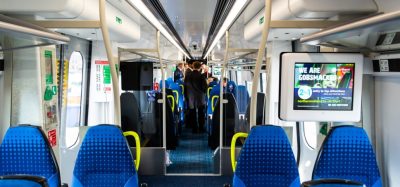Railroad to climate-neutrality: Next generation rail freight transport
Posted: 4 August 2021 | Ben Möbius | No comments yet
Dr. Ben Möbius, Managing Director of the German Railway Industry Association (VDB), writes how three goals – digitisation and automation; accelerated electrification; and ensuring social acceptance – are key if the rail industry is to realise the significant changes needed to truly decarbonise the logistics sector.


Europe is on the brink of the next mobility revolution. Climate-neutral by 2050 – this objective is at the heart of the European Green Deal founded in the European Union’s (EU) commitment to global climate action under the Paris Agreement. The European Commission (EC) clarified that, in order to achieve these rightly, ambitious targets, the greening of freight transportation is of pivotal importance: by 2030, rail freight traffic must increase by 50 per cent, to account for a market share of around 30 per cent. This transition to climate-neutral intelligent logistics is both an urgent challenge and a fascinating opportunity for the rail sector.
With road freight transport primarily dependent on fossil fuels, accounting for 76 per cent of the EU’s total inland transportation (in 2019), it is plain that freight logistics is still failing to make sufficient progress to mitigate climate change. By the same token, many countries are facing monumental traffic jams – often caused by countless heavy duty trucks on Europe’s highways – compromising individual transport and undermining the mechanics of predictable supply chains. Forecasts expect freight traffic to grow rapidly in the years to come. But no industrialised nation can afford macro-economic bottlenecks. Nor can mankind afford to postpone climate protection.
For near zero greenhouse gas (GHG) emission logistics, there is a proven solution: intermodal rail freight. Undoubtedly, nowadays, rail transportation is making a major comeback, offering excellent services. It transports large quantities of goods safely, rigorously reducing the carbon footprint of supply chains. Especially during the COVID-19 pandemic, rail freight transport impressively demonstrates its resilience and robust functionality. According to a report commissioned by the German Federal Ministry of Transportation, an increase in the modal share of rail in freight transport of one per cent translates into a reduction of CO2 emissions of approximately one million tonnes per year. Digitalisation has the potential to propel the market share of rail freight from around 19 per cent today, to around 30 per cent by 2030, as stipulated by the EC – facilitating a decrease of around 10 million tonnes of CO2 eq. by 2030 in Germany alone. In a nutshell: Only a successful shift to rail decarbonises logistics swiftly and effectively.
But, in order to fulfil this essential role for high performance and clean mobility by 2030, rail transportation must proceed disruptively: fully capitalising on digitalisation; smarter, faster, more flexible, fully interoperable and more intermodally connected; sharing the burden with other modes of transport; highly competitive; drastically speeding up the adaption of innovative technologies. For this massive boosting to occur, both industry and governments need to invest and re-think framework conditions. There are three main goals that Europe needs to focus on: ambitious digitisation and automation; accelerated electrification; and ensuring social acceptance.
Digitalisation and automation
In order to manage traffic flows sustainably, rail freight transport must achieve seamless border crossings and the highest capacity level. Digitalisation and automation are game changers. Clean logistics cannot be achieved within the bounds of intermodal animosities. Future logistics is about partnership based on adequate infrastructure and sharing data between all modes of transport. Intelligent networking with road, sea and air transport based on cross‑modal, real-time data systems will allow digital trains to form the competitive backbone of future logistics, relieving the pressure on road networks and fuelling economic growth.
In the field of interoperability, the European Train Control System (ETCS) is imperative in generating a smooth, cross-border, genuinely European network with international rail corridors. ETCS is also the prerequisite for autonomous driving and an increasing degree of automation. Another key innovation for automation is Digital Automatic Coupling (DAC). In conjunction with ETCS, DAC forges the basis for the automated freight transport of the future. Intelligent rail generates a completely new level of reliability and flexibility. DAC enables data-based monitoring and less time-consuming, cost-intensive single wagon transport. In addition, DAC improves inspection and repair procedures by shortening downtimes, thus optimising the number of available wagons in operation. In automated marshalling yards, in particular, DAC reaches its full potential. Automated brake samples, automated technical monitoring and autonomous train formation systems increase efficiency enormously and occupational safety in shunting operations. By revolutionising these processes, DAC paves the way to intelligent rail logistics.
2020 was a year of great progress for DAC, particularly through the ‘Berlin Declaration’ by the European Transport Ministers. In 2021, we must continue this momentum with rapidly actionable milestones and reliable financing at an EU level. The successful migration of this key facilitator requires the conversion of approximately 450,000 freight wagons and 17,000 locomotives. The estimated investment for an implementation period of seven years amounts to around €8 billion and needs to be recognised as one of the top priorities in Europe. Unwavering political support is of paramount importance for macro-economic benefits and climate protection to prevail.
Electrification
Electric mobility has been a reality on the railroad for over 140 years. Today, rail effectively contributes to climate protection with highly efficient electric locomotives. For rail transport to be as climate friendly as possible, it is necessary to massively increase the degree of electrification. The German railway industry is a global leader in its holistic, 360-degree approach to clean mobility.
There can be no doubt that electrification via catenary and pantograph is a perfect means of minimising GHG emissions in logistics while simultaneously boosting growth. Furthermore, electric trains emit zero pollutants locally. Electrified rail uses a significant proportion of renewable energy. Europe needs more stringent planning and improved procurement processes to remain at the forefront of e-logistics.
Ground-breaking innovations such as hydrogen, battery and hybrid drives offer emission-free solutions worldwide, where track electrification is not (yet) topographically or economically an option. In cases of patchy electrification, catenary dual-mode locomotives can also efficiently bridge the gap between electrified lines operating in emission-free mode and unelectrified first or last miles. To achieve vigorous implementation, political incentives are vital to ignite the market rampup for various alternative drives in order to bring about the maximum climate benefit. The bedrock of any adequate political approach is the development of a strong charging infrastructure.
Rail is already extremely energy efficient and will drastically save more and more energy thanks to lighter materials in vehicle construction and the wider use of energy recuperation. Energy efficiency is a key topic in research and development, e.g. in Shift2Rail. But innovations still fall through the cracks of today’s tendering models far too often. Where contracts are awarded based strictly on the purchase price, the best options for both customers and our climate might be lost. The existing approaches in EU law must be applied consistently to transform new technologies and European value creation into disruptively new mobility.
3. Public acceptance
Last but not least, solid social acceptance is essential for rail freight transportation to thrive. Understandably, many residents evaluate rail transport through the prism of noise emissions. Technologies for quieter rail freight traffic are already relieving the burden on local residents. The conversion of wagon fleets to whisper brakes by 2021 is a major step forward. By 2030, advances by the German railway industry will make things ever quieter: innovative bogie frames, disc brakes, high‑speed rail maintenance, silencers. In the future, a passing train will be quieter than a vacuum cleaner.
Thanks to innovation, a clean, smart decarbonisation of logistics by 2030 via digital, intermodally intertwined rail freight transport is no longer a pipe dream – a quintessentially breath-taking promise, yet a realistic prospect of a new era. Rail freight transport can live up to its responsibility for climate-neutrality. For logistics to turn the corner in terms of GHG emissions by 2030, first and foremost, investment, ambition and pace is needed. Germany, Europe and many other countries are well on track for future logistics. The German railway industry has the privilege of contributing creative, innovative customer-oriented solutions to translate this challenge into an unprecedented success story for logistics, growth and climate protection by 2030.
Biography


Issue
Related topics
Cargo, Freight & Heavy-Haul, Digitalisation, Sustainability/Decarbonisation






